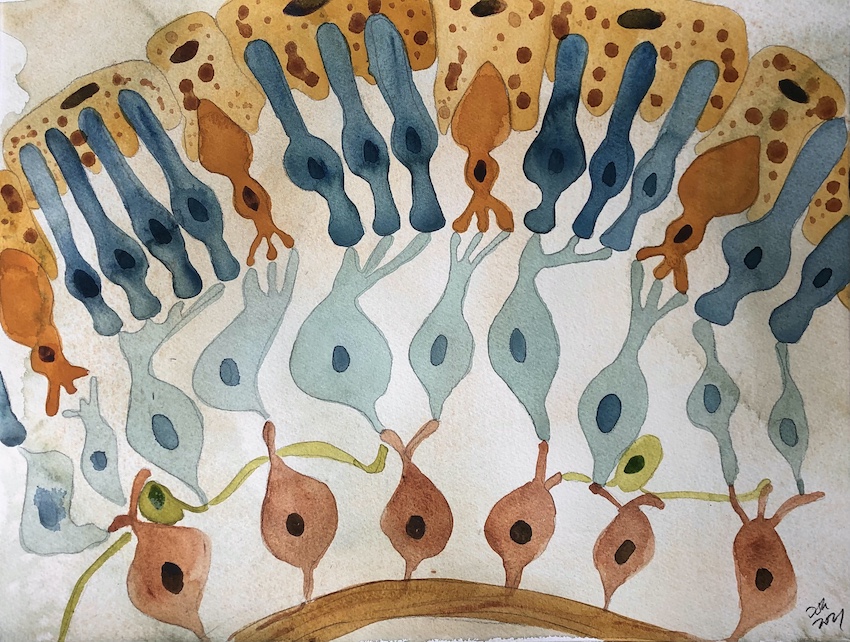Photoreceptors

Biorelevant culture of photoreceptors on Biolaminin substrates
Laminin proteins constitute a vital part of the photoreceptor matrix
Adult photoreceptors have been shown to adhere selectively to recombinant laminin beta-2 chain (Hunter, 1992). Beta-2 chain laminin has also been suggested to play a role in directing photoreceptor development where its spatial and temporal expressed throughout embryonic development and adulthood (Libby, 1996).
Apart from presence in the retinal pigmented epithelium and neural neuroepithelium, the laminin beta-2 chain is also found in association with choroidal blood vessels and blood vessels in the neural retina. In both places, it is co-localized with laminin 111 and the culture of human embryonic stem cells on laminin 111 has indeed shown to induce expression of photoreceptor markers (Gong, 2008).
In a publication by Libby et al., the authors examined the expression of all known laminin chains within the retina. The interphotoreceptor matrix contains the laminin a3, a4, a5, b2, b3, g2, and g3 subunits, which suggests the presence of three laminins: laminin 332, 423 and 523. These isoforms were also expressed in the subretinal space during early development and may play an important role in photoreceptor development, production, stability and synaptic organization (Libby, 2000).
Based on the importance of the beta-2 chain we recommend Biolaminin 521 for the culture of photoreceptors.
Succeed with your application
-
Instructions 001: Coating with Biolaminin substrates
Protocol and concentration calculations for coating cultureware with Biolaminin
Open pdf -
Xeno- and feeder-free differentiation of human pluripotent stem cells to two distinct ocular epithelial cell types using simple modifications of one method
Hongisto H., Ilmarinen T., Vattulainen M., Mikhailova A., Skottman H. Stem cell research and therapy, 2017
Read more
Biolaminin Key Advantages
Transplanted hESC derived cells that are grown on Biolaminin 521 show long-term, in vivo functionality, including phagocytic activity and photoreceptor rescue.
Specific laminin isoforms are present in different tissue microenvironments and are essential for cell survival, proliferation, and differentiation. Biolaminin products allow you to imitate the natural cell-matrix interactions in vitro.
Our products have consistent composition and quality. This enables minimized variability between experiments and uniform pluripotency gene expression profiles between different cell lines.
All our matrices are chemically defined and animal origin-free, which makes them ideal substrates for each level of the scientific process – from basic research to clinical applications.
Numerous scientists have found our products and finally succeeded in their specific stem cell application. The power of full-length laminins incorporated into various cell systems is well documented in scientific articles and clinical trials.
Recommended products
-

Biolaminin 521 LN (LN521)
Human recombinant laminin 521
Biolaminin 521 LN is the natural laminin for pluripotent stem cells and therefore reliably facilitates self-renewal of human ES and iPS cells in a chemically defined, feeder-free and animal origin-free stem cell culture system. LN521 is animal origin-free to the primary level.View product -

Biolaminin 111 LN (LN111)
Human recombinant laminin 111
Biolaminin 111 is commonly used as a general attachment protein for many cell types in vitro.View product

Talk to our team for customized support
We are here to help you in your journey.